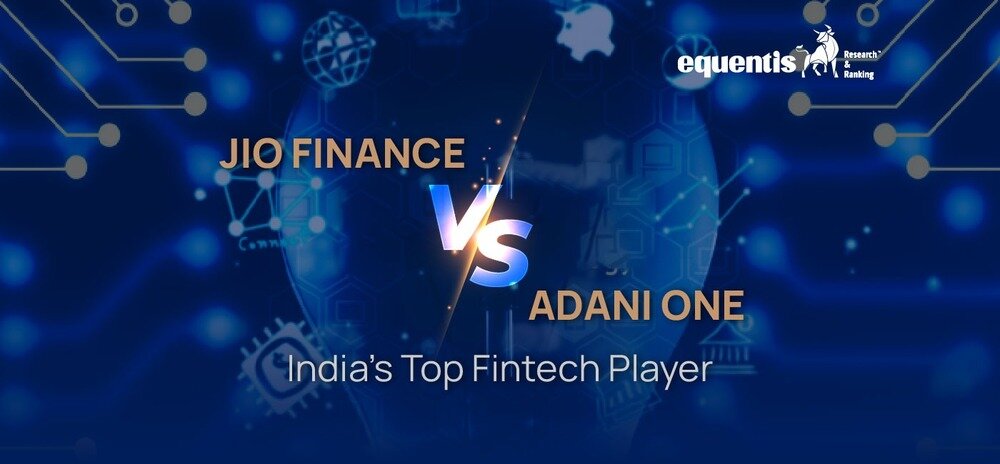India’s fintech scene is buzzing with excitement as two of the country’s biggest conglomerates, Reliance Industries and the Adani Group, step into the spotlight. Jio Finance, Reliance’s digital arm, and Adani One, a possible new player from the Adani Group, are gearing up to shake things up.
They’re set to give existing fintech companies a run for their money and could potentially transform the entire industry. In this article, we’ll dive into this looming battle for fintech supremacy and what it means for consumers and the broader Indian financial landscape.
The Rise of Fintech Super Apps
The Indian fintech sector has seen tremendous growth in recent years, driven by factors such as increasing smartphone penetration, internet access, and a young, tech-savvy population.
However, the market remains fragmented, with numerous players offering specific financial services through individual apps. This is where the concept of fintech super apps comes in. These apps aim to be a one-stop shop for all financial needs, offering a wide range of services like digital payments, investments, insurance, lending, and wealth management.
In 2021, India’s fintech lending sector generated $8 billion in revenue. This figure is expected to soar to $105 billion by 2030. The Indian fintech market is expanding rapidly and is anticipated to grow significantly in the coming decade.
Revenue of the fintech market in India in 2021, with projection for 2030, by segment
(in billion U.S. dollars)

Jio Finance: A Powerhouse
Jio Finance, launched in 2023, has the potential to be a game-changer in the Indian fintech space. Backed by the vast reach and resources of Reliance Industries, Jio Finance has a significant advantage in terms of brand recognition and customer base. The company has already made strategic moves by:
- Building a Super App: The Jio Finance app offers a comprehensive suite of financial services, including digital payments through JioMoney, microloans, investment products through a partnership with BlackRock, and insurance offerings.
- Leveraging Existing Infrastructure: Reliance’s extensive network of Jio Points and physical retail outlets can act as distribution channels for Jio Finance’s products and services, bringing financial inclusion to a wider population.
- Focus on Innovation: Jio Finance has shown a commitment to innovation by partnering with leading technology companies to develop user-friendly and secure financial solutions.
Key Features:
- UPI transactions for merchants, bill payments, and money transfers
- Zero balance bank accounts with up to 3.5% interest rate
- Integration of FASTag, DTH, and mobile recharges, along with other bill payments
- Loan solutions start with loans on mutual funds and expand to home loans.
Advantages:
- Strong brand recognition and network effect from Reliance Industries
- Significant capital backing with potential for further investments
- A comprehensive suite of financial services on one platform
Disadvantages:
- Competition from established fintech players like Paytm, PhonePe, and Google Pay
- Need to build a strong customer base and attract users to other services
- Regulatory challenges and compliance requirements
Adani One: A Potential Challenger Emerges
While Adani One hasn’t officially launched yet, the Adani Group’s foray into fintech is a possibility that cannot be ignored. The group’s recent co-branded credit card launch with ICICI Bank and Visa suggests a potential roadmap for a comprehensive financial services platform. Adani’s strengths lie in:
- Strong Brand Presence: The Adani Group has a well-established brand reputation in India, and its entry into fintech could attract a loyal customer base.
- Diversified Business Portfolio: Adani’s presence in sectors like ports, energy, and infrastructure could provide unique synergies for its fintech offerings, potentially creating a more integrated financial ecosystem.
- Focus on Scale: The Adani Group is known for its aggressive expansion strategies. This could translate into a rapid scaling-up of its fintech offerings, posing a significant challenge to the competition.
Key Features:
- Integration with ONDC for e-commerce and payments
- Potential to offer digital payment services via UPI
- Travel booking services through Cleartrip
- Airport operations services
Advantages:
- Strong brand recognition and network effect from the Adani Group
- Potential for seamless integration with existing airport operations and travel services
- Strategic partnerships with Uber and Flipkart
Disadvantages:
- Smaller user base and adoption compared to established fintech players
- Need to build a strong customer base and attract users to additional services
- Regulatory challenges and compliance requirements
The Battleground: Products, Pricing, and User Experience
The battle between Jio Finance and Adani One will likely be fought on several fronts. Here’s a closer look at the key areas:
- Product Range: Both players are expected to offer a wide range of financial products, but the depth and breadth of their offerings will be crucial. Specialized products or value-added services could become a differentiator.
- Pricing Strategy: Competitive pricing will be essential for attracting and retaining customers. Jio Finance may leverage its large customer base to negotiate lower fees, while Adani One might focus on introductory offers to gain traction.
- User Experience: A user-friendly and secure app is paramount. The seamless integration of various financial services and intuitive design will be critical for user adoption.
Implications for Consumers
The competition between Jio Finance and Adani One is ultimately good news for Indian consumers. It is likely to lead to:
- Increased Innovation: Both players will strive to develop innovative financial products and services to attract customers. This will benefit consumers with a wider range of choices and potentially more competitive rates.
- Improved User Experience: The focus on user experience will lead to more user-friendly apps and a smoother experience when managing finances.
- Greater Financial Inclusion: Jio Finance’s existing infrastructure and Adani’s potential focus on scale could bring financial services to a wider segment of the Indian population.
Challenges and Uncertainties
Despite the potential benefits, some challenges remain:
- Regulatory Landscape: The Indian fintech regulatory landscape is still evolving. Navigating the regulations could pose challenges for both companies.
- Data Security and Privacy: With a large number of financial transactions happening online, data security and privacy will be a major concern. Both companies need to build robust security measures and ensure transparent data practices.
- Competition from Existing Players: Established players like Paytm, PhonePe, and traditional banks will continue to be strong competitors.
Impact on the Fintech Landscape
The entry of Jio Finance and a potential Adani One platform will significantly impact the Indian fintech sector:
- Increased Competition: Existing players like Paytm and PhonePe will face stiffer competition, potentially leading to lower fees and better customer experiences.
- Innovation: The fight for market share will drive innovation in product offerings, user experience, and security measures.
- Financial Inclusion: With established conglomerates entering the fray, financial services could become more accessible to a wider population, especially in rural and underbanked areas.
The Road Ahead
The battle for fintech supremacy in India between Jio Finance and Adani One is just beginning. The success of each platform will depend on its ability to offer innovative and user-friendly financial products, build robust distribution networks, and navigate the regulatory environment. Ultimately, this competition will benefit Indian consumers by driving innovation and making financial services.
*Disclaimer Note: The securities quoted, if any, are for illustration only and are not recommendatory. This article is for education purposes only and shall not be considered as recommendation or investment advice by Research & Ranking. We will not be liable for any losses that may occur. Investment in securities market are subject to market risks. Read all the related documents carefully before investing. Registration granted by SEBI, membership of BASL, and certification from NISM in no way guarantee the performance of the intermediary or provide any assurance of returns to investors.
FAQs
What are the core financial services Jio Finance and Adani One might offer?
Both companies are likely to compete in digital payments, credit and lending, investments and wealth management, and insurance. Jio Finance has a head start with some offerings, while Adani One’s strategy remains to be fully revealed.
How will Jio Finance and Adani One reach their customers?Jio Finance has a significant advantage with the vast user base of Jio, its parent company. Adani might leverage its existing customer base across its various businesses and potentially forge strategic partnerships.
How will this battle between these giants impact Indian consumers?
Increased competition between Jio Finance and Adani One is likely to benefit consumers by potentially leading to lower fees, better user experiences, and more innovative financial products.
What are some of the challenges Jio Finance and Adani One might face?
Both companies will need to navigate the evolving regulatory landscape for fintech, ensure robust data security and user privacy, and achieve profitability within a competitive environment.
How useful was this post?
Click on a star to rate it!
Average rating 4.5 / 5. Vote count: 2
No votes so far! Be the first to rate this post.
I’m Archana R. Chettiar, an experienced content creator with
an affinity for writing on personal finance and other financial content. I
love to write on equity investing, retirement, managing money, and more.
- Archana Chettiar













